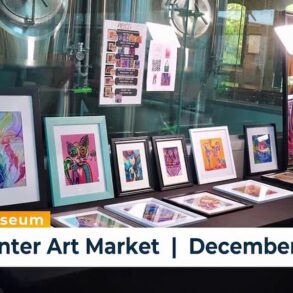The digital marketing landscape is experiencing unprecedented transformation, driven by rapid technological advancements and shifting consumer behaviours. As brands increasingly prioritize innovative and data-driven strategies, the need for agile and integrated marketing solutions has never been more critical. This evolution has challenged traditional agency models, prompting a shift towards a new paradigm where creativity and technology must work hand in hand to deliver effective campaigns. In this dynamic environment, businesses are seeking partners who can navigate the complexities of digital marketing, ensuring they stand out amidst fierce competition.
Against this backdrop, Asymmetrique has emerged as a pioneering force in providing tailored marketing solutions that combine creativity, consumer insights, and advanced technology. Founded by industry veterans, the agency aims to address the unique challenges brands face in the digital era by offering a comprehensive approach that bridges the gap between traditional marketing and modern digital strategies. By leveraging data and insights, Asymmetrique empowers clients to build impactful brand ecosystems that resonate with consumers, driving engagement and conversions across multiple channels.
In this interaction with Adgully, Nitin Gupta, Founder and MD, Asymmetrique, delves into the vision and journey of the agency, and its unique approach to solving brand challenges. He also speaks about how Asymmetrique is redefining the agency-client relationship, the innovative strategies it employs to stay ahead of digital marketing trends, and the exciting future of marketing in a rapidly evolving landscape. Join us as we uncover the insights and experiences that have shaped Asymmetrique into a trusted partner for leading brands.

As the founder of Asymmetrique, what inspired you to transition from consulting Fortune 500 clients and co-founding IKS Health to starting your own marketing solutions company? What was your vision for Asymmetrique at its inception?
At heart, I am a professional who enjoys the process of solving business problems. It has been my North Star across roles, be it consulting to Fortune 500 clients, being a KPO entrepreneur, or founding Asymmetrique. Back in 2008, the industry was witnessing tremendous disruption; the marketing ecosystem was changing at a molecular level due to the advent of digital. I saw the glaring need for a new breed of solution provider that went beyond the standard one-size fits all approach, which was the norm for traditional agencies. Additionally, given the inherent complexities of digital, businesses needed “consultants that also do” instead of those that merely advise. Asymmetrique was conceived with that vision in mind.
Asymmetrique has a unique approach, combining consumer insights, creativity, and technology for digital-first strategies. Can you elaborate on how this “art married with science” philosophy shapes your approach to building brand ecosystems for your clients?
Creative advertising has been about the art of understanding consumer behavior and then bringing ideas to life based on the creative team’s gut. With digital, we have the opportunity to energize this gut with data. In a customer-first environment, consumer research too becomes imperative for any D2C brand looking to offer substantial value. Understanding specifically what consumers want from a brand by leveraging direct conversation and studying the near real-time patterns have enabled us to create a level-playing field for emerging brands in the context of established brands with great media spending power and visibility.
Additionally, using martech, we help newer brands build their first party consumer data across omnichannel touchpoints. Over a period of time, this fuels more efficient media strategies, marketing mix modeling, product and pricing strategy, and consumer lifetime value generation. At an impact level, it allows our client brands to get deeper into the lives and mind spaces of their target audience advertising.
In the future, we foresee a large part of our role for brands being that of building AI agents that will leverage these data to do everything – full-funnel marketing, customer acquisition, and CRM – with the help of human creativity. We are set to see the art of creativity truly marrying the science of marketing.
With over 15 years in the industry and experience across sectors like FMCG, BFSI, and real estate, how do you stay ahead of evolving digital marketing trends and ensure your clients are consistently positioned for success in the digital age?
At Asymmetrique, we are committed to influencing our clients’ marketing vision with proactive investments in staying ahead of the curve. For instance, our Brand X team is always evaluating newer applications of creative technology to benefit our client brands. Similarly, our Tech and Data consulting team constantly operates at the leading edge of the evolving martech landscape. It ensures our clients make the right choices, and deploy in-house tech stacks with an eye on the data-driven future. Finally, our newly launched eCommerce vertical marks a milestone in our quest to offer complete Brand-to-Sales solutions. As the lines between marketing and sales blur further for D2C brands, we are also partnering with clients based on pay-for-performance models, which are also linked to sales metrics.
How has Asymmetrique’s work with notable clients such as Unilever, ITC Foods, and Tata Mutual Fund helped shape the company’s reputation as a trusted brand partner rather than just a service provider? Could you share some success stories?
Our clients have had a tremendous impact on our journey. For instance, our client, Tata Mutual Fund, tasked us with a unique mandate. Unlike traditional investor education programs that stop at awareness, the brief was to trigger action and transform habits with a campaign for its investor education program. This pushed us to dive deep into the urban Indian psyche and create a high-on-relatability campaign – ‘Jab Life Mange More, Badho Mutual Funds Ki Ore’. The action-inspiring campaign was supported by a full-funnel strategy. It answered questions around – desh kyun nivesh kare, desh kahan nivesh kare, and desh kaise nivesh kare. The tri-part approach led to a flood of response from across India, engaging 6 million+ Indians and earning 10x ROAS. It also saw us winning multiple industry accolades.
Similarly, the mandate for Taj Mahal Tea House from Unilever demanded us to unlearn the standard rules of market penetration. Even as we were to drive channel creation and build a thriving phygital ecosystem, we were to be discerning. This had us continuously innovating to drive value-focused growth.
As someone who has driven growth for businesses in various industries, what are the common challenges that companies face when integrating digital-era marketing into their strategies? How does Asymmetrique address these challenges uniquely?
The biggest problem facing clients today is the extremely fragmented nature of digital services’ providers. Efficacy-focused clients would need to hire five to six digital marketing partners in order to cover the entire spectrum of competencies needed for integrated digital-era marketing. The scenario also leads to marketing teams spending too much time as vendor managers. And even after that, solutioning for unified briefs and integrated output suffers.
Unlike a lot of specialist agencies and/or the agency networks who have expanded their services via acquisitions, Asymmetrique has built an integrated digital-first solutions model at the core, right from inception.
This allows us to centre our offerings around solving 3 primary problems for our clients:
- Top-funnel traffic: Navigating complexities of the plethora of digital platforms available to advertisers and brand-builders
- Middle-funnel engagement: Resolving the confusion around consumer journeys across online and offline channels
- Bottom-funnel conversions: Ensuring ROI from media and spends
In doing so, we have built strong in-house capabilities to deliver integrated solutions and execution for our clients. The output then, inherently addresses the brief fragmentation and vendor management issues that marketers otherwise face when dealing with multiple digital marketing service providers.
Looking ahead, how do you envision the role of digital marketing evolving in the next 5 to 10 years? What innovations or changes are you most excited about, and how is Asymmetrique preparing to lead in this space?
AI is clearly the most-exciting and disruptive change sweeping across our business. We envision that clients would be completely unwilling to pay for pure human creative services in the next 5 years. It would be the final nail in the coffin for retainer-based contracts. Pay for output would become the norm. Our performance would be judged on the basis of our ability to use AI for enhanced creative output at the lowest cost possible.
This would need agencies to develop proprietary applications and methods for using AI to achieve different client objectives, up and down their marketing funnel. This would also entail truly using data for AB testing, creative and media optimization, driving eCommerce sales conversions, and conducting CRM and ORM activities. Accountability for results would become non-negotiable in the business of creativity.
At Asymmetrique, we always embrace disruption. In 2025, we plan to launch an AI adoption team to explore and incorporate the most potent AI applications into our daily operations and deliveries. Through a systematic program, we will ensure that we lead the shift towards AI for our clients to benefit and gain from the disruption.
Also Read: We are allocating 75-80% of our festive ad budget to digital platforms: Ripal Chopda








